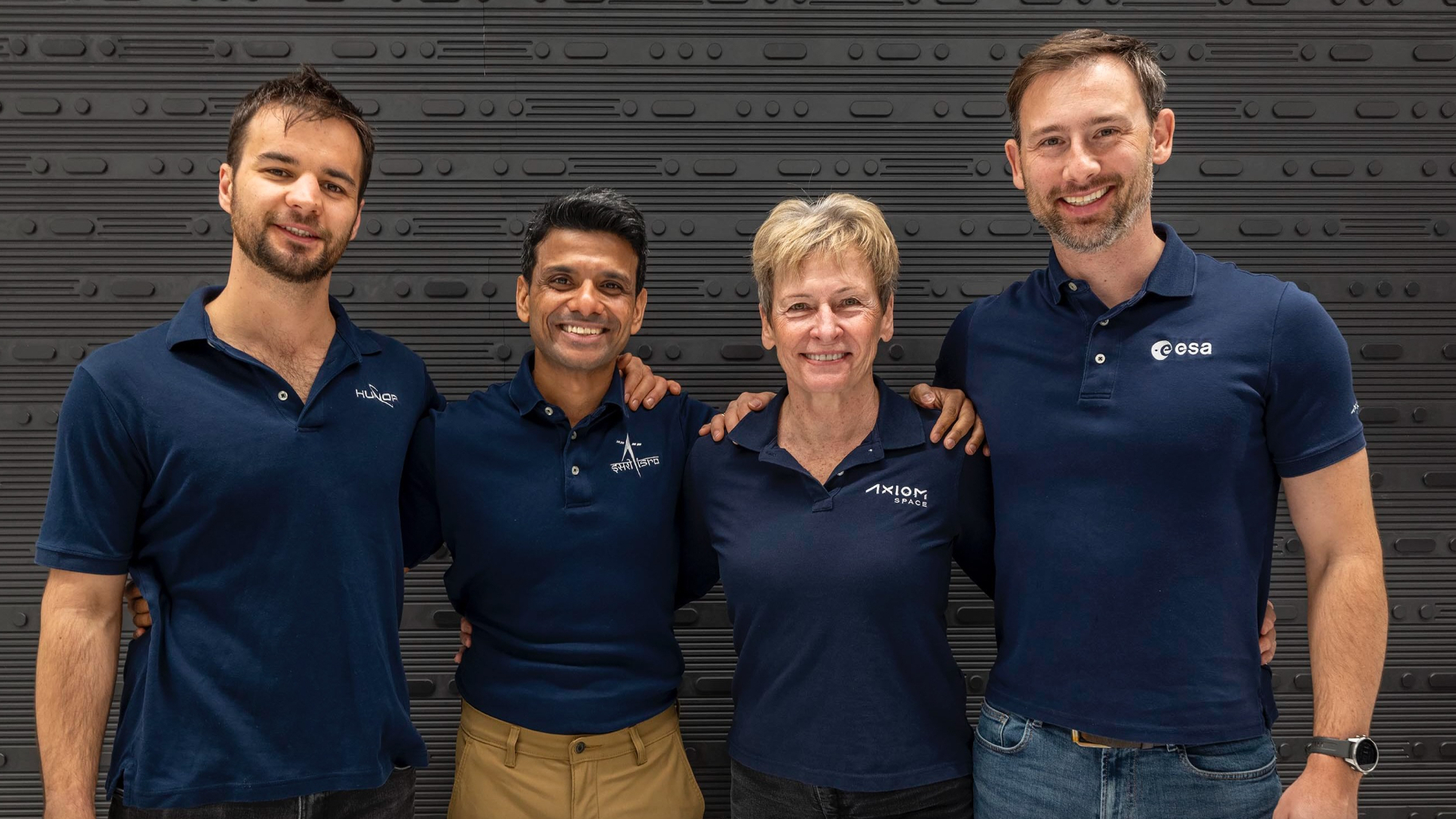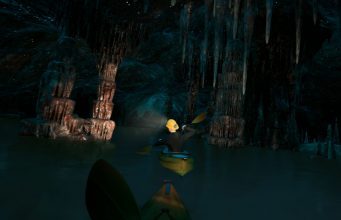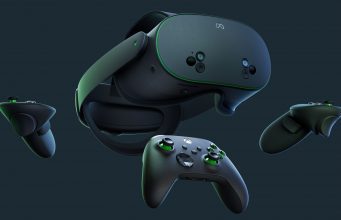Hands-on with Lumus waveguides
At AWE, I have been able to sit down with Lumus in a private meeting room. There, I had a short interview with them, and I’ve also been able to try their waveguide-based optical engines! Discover everything about them by reading this article! Lumus Lumus is a company that works on display systems for augmented […] The post Hands-on with Lumus waveguides appeared first on The Ghost Howls.

At AWE, I have been able to sit down with Lumus in a private meeting room. There, I had a short interview with them, and I’ve also been able to try their waveguide-based optical engines! Discover everything about them by reading this article!
Lumus
Lumus is a company that works on display systems for augmented reality. It has been active for around 20 years now (WOW!), and it worked for more than 15 years with the military, building AR visualization systems for airplane pilots, for instance.
Lumus’s specialty is working with reflective geometric waveguides. The visual engine is made of a tiny projector that emits the virtual image and a lens with two sets of partially reflective mirrors that spread the image across the horizontal and vertical axes. The transparent lens lets you see the real world, while the mirrors carry the virtual image to your eyes: the mix of the two is an augmented reality. When you see one of their lenses, you can also see these mirrors, which appear as sets of parallel lines.

The company claims that since they use reflective waveguides, they can preserve the colors and brightness of the images they project on the lenses. Their products also have very high luminance: from 3000 to 7000 nits, which means they are not only good to wear inside, like the other AR glasses like HoloLens, but they are also great with outside ambient light.
Reflective waveguides can also be merged with a prescription layer, meaning that it is possible to create an optical engine that projects AR elements, and at the same time features prescription lenses to make you see the real world better.

Lumus also claims that its battery efficiency is up to 10 times greater than any other waveguide on the market: this is a very important datum for AR glasses, where energy consumption should be reduced to its minimum.
Lumus’s products at AWE
When I arrived at the booth, the first thing that Lumus teased me was its upcoming visual system featuring 70° of FOV. Yes, 70°, the same as Meta Orion, but using only glass as a material and not something exotic (and very expensive) like silicon carbide. They had a prototype of the lens and the projector there, but they could not let me try it. Theoretically, they should launch it at the next CES, which is close enough to be excited about.

They had two other systems for me: one with a 50° field of view, and the other with 30°, which was the new product just announced at AWE. I was a bit confused as to why offering a new product with a reduced field of view, but actually, after they explained it to me, it made a lot of sense. The 30° module is much more power efficient, meaning that it is less aggressive on the battery of your AR glasses and smartglasses. At this moment, the devices that are getting the most popularity are smartglasses that either do not have a display or just need a simple one to show notifications. These glasses do not need to provide immersive content, they just show small 2D content, sometimes in a monocular and other times in a binocular fashion. So it is useless to have a full 50° FOV: a 30° one suffices, and it allows for a longer battery life.

Hands-on with Lumus’s optical engines
I have been able to go hands-on with Lumus’s AR systems. Notice that the company does not want to build its own glasses, but just be a provider of the optical engine for the firms making AR glasses or smartglasses. For this reason, at the booth, there were no commercial glasses to try. But Lumus built a prototype to let people try its products and at the same time have an idea of how small the glasses using this system may be.
The glasses were pretty small and had a fashionable blue frame. They were connected with a cable to a PC that was controlling the visuals projected on the lenses. Since they were not selling standalone glasses, there was no need to make a wireless demo, and a cabled demo of the optical system was fine to me.
Both the 30° and 50° models had a similar output, so I will just describe them once. Of course, the 50° model had a wider field of view, but rest assured, the rest was almost identical.

Since the optical systems were small, the test glasses were very lightweight, too. And it was cool to see that the lenses was very transparent, and not darkened out like it happened in the past with glasses like HoloLens. As I’ve explained while talking about LetinAR, this is a great thing because when seeing the person wearing the glasses, you can see his/her eyes and for us humans, it is very important to see the eyes of the people we are interacting with.
The first thing that surprised me when I was shown some images was the shape of the field of view: it was square-shaped, so its form factor was mostly 1:1. This was quite good because I remember reading somewhere that for our brain, having a good vertical field of view is very important. The form factor contributed to giving the impression that the FOV was actually bigger than 30°.
As for the colors, I can state that the claims of the company are correct. I have been shown some images with very bright colors, like the photo of a parrot, and the colors appeared very vivid. I also wanted to test the high luminance (up to 7000 nits), so I started looking at the lights on the ceiling. If I put the virtual image exactly superimposed on a light, of course, I couldn’t see much, but if I still looked up and put the virtual elements close to a light, I could still see everything. This quick test showed me that these waveguides are much brighter than what I’m used to, and remain visible also in bright light conditions. I couldn’t go outdoors with the glasses, unluckily, so I can’t confirm that they could be used outside… but from my indoor tests, I can confirm that potentially they could (I’m not 100% sure because the sun is much more powerful than any artificial light used to illuminate a room, so I still need to do a real test).
I was then shown various optical patterns, including some test images that I’ve seen multiple times in the articles written by Karl Guttag (whom I love, btw). The text was readable, and the white background appeared as just white. This may seem obvious, but it is not: it is very easy to have color artifacts on a white square. HoloLens had a lot of “rainbows” appearing when you were looking at a white element, for instance.

Of course, no current AR system is perfect. And one thing that I noticed when I tried Lumus is that sometimes I had some horizontal grayish bars appearing on the image. They were much more evident when I was closing or opening the eyelid. The company spokesperson told me that it usually does not happen, so it probably depends on the shape of my face. But still, if I have seen them, other people will see them for sure.
Final impressions
The name Lumus is very famous in the AR space, but it was the first time for me to finally speak with the company and try the product. I have come out of the meeting with them with a very positive impression: they seemed very professional, and they showed me a product that was working great. The bright colors and the high luminance were the two biggest highlights for me. And the fact that in a few months, they will be able to do 70° of FOV is impressive, too.
Before we parted, the Lumus spokesperson told me to “expect to see our tech in some glasses in the near future”, meaning that pretty soon we will see some real product using these optical systems. I can’t wait to try it!
The post Hands-on with Lumus waveguides appeared first on The Ghost Howls.























































































































































